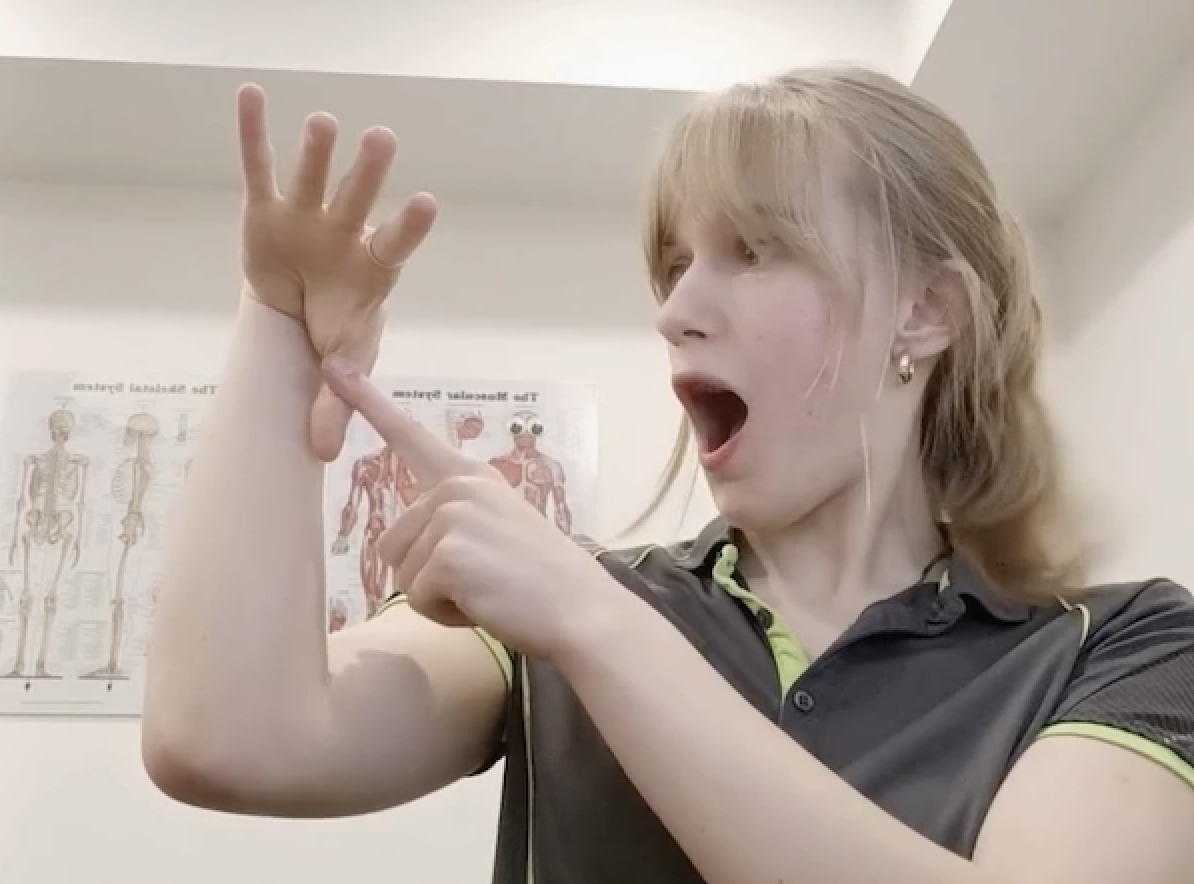Ehlers – Danlos Syndrome & Hypermobility Spectrum Disorder
What is Ehlers – Danlos Syndrome?
Here at Physio and Fitness clinic, our Myotherapist Ebony specialises in treating Ehlers – Danlos Syndrome (EDS) and Hypermobility Spectrum Disorders.
What is Ehlers – Danlos Syndrome?
EDS is a group of 13 inherited genetic disorders that affects the body’s connective tissue, weakens the collagen in the body and as a result reduces strength of ligaments, tendons, muscles and blood vessels. The most common form of EDS is Hypermobility, which is the clinical word we use to describe someone who has ‘super bendy’ joints.
Whether you have diagnosed EDS/Hypermobility or you suspect it, Ebony will help guide you through your management plan.

SYMPTOMS OF EDS and HYPERMOBILITY
EDS is characterised by symptoms such as hypermobile joints, fatigue, pain, super stretchy and velvet like skin, increased risk of injury, dislocations and subluxations, flat feet, gut issues, allergies, headaches and TMJ related issues, problems with sleep, cardiovascular symptoms, dizziness and overall chronic pain.
How is EDS/Hypermobility diagnosed?
Here at PFC, we can start your process by an assessment of your joints, skin and mobility. We will also discuss with you your medical and family history to help us determine whether you have EDS or Hypermobility.
Impact on individuals with Ehlers – Danlos Syndrome
Each person is different. Each persons experience is a combination of the specific symptoms that affect them. For some, even doing simple chores around the house can leave them in pain and reduce an individual to one or two tasks a day. For others, they may find that they struggle with constant joint pain when training in the gym, or extreme muscle pain post workout, preventing them from performing at their best and reaching their fitness goals. Or they may find that their ‘Mind to Muscle Connection’ is lacking, making it hard to activate and target particular muscles, and making full body functional movements difficult.
What can we do?
For many clients, a personalised management plan can enhance their ability to enjoy life feeling strong and be in less pain. We help clients to understand their own body and give you the tools to manage when things flare up in an EDS body. We also train our clients on what exercises work best for each individual body, which includes injury prevention and pain management.
Ehlers – Danlos Syndrome – The FAQs
Why is treatment important?
Treatment reduces the joint and muscle pain caused by EDS. It also helps to prevent injuries such as subluxations or sprains. This helps you go about your daily activities without that persistent pain and allows you to take on any physical challenge without the fear of injury.
Is Hypermobility and EDS the same thing?
EDS is an umbrella term for the 13 different variations of this connective tissue disorder. Hypermobility is one of those variations.
Can myotherapy help manage my pain?
Yes! Myotherapy can be beneficial in managing flare ups of muscle and joint pain for individuals with EDS. Myotherapy can help to loosen up overly tight muscles and ‘wake up’ underactive muscles. It can also help reduce any joint and muscle fatigue.
This blog was written by Ebony Johnson, Myotherapist at Physio & Fitness Clinic, Diploma of Remedial Massage & Advanced Diploma of Myotherapy.
Ebony specialises in TMJ, neck, shoulder, hip issues as well as Ehlers-Danlos Syndrome, hypermobility, POTS, headaches and migraines. She blends hands-on therapy and clinical insight to help clients find better movement and relief.
For an official diagnosis of Ehlers – Danlos Syndrome You would need to visit your GP for a referral to a geneticist and cardiologist.
AM I HYPERMOBILE? HERE ARE 5 SIGNS YOU MIGHT BE!
Here at Physio and Fitness Clinic, we can assist you with your sports injuries, and build core strength. Make an appointment with a physio today for physiotherapy and physio run pilates.
